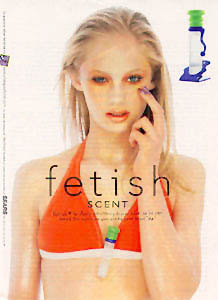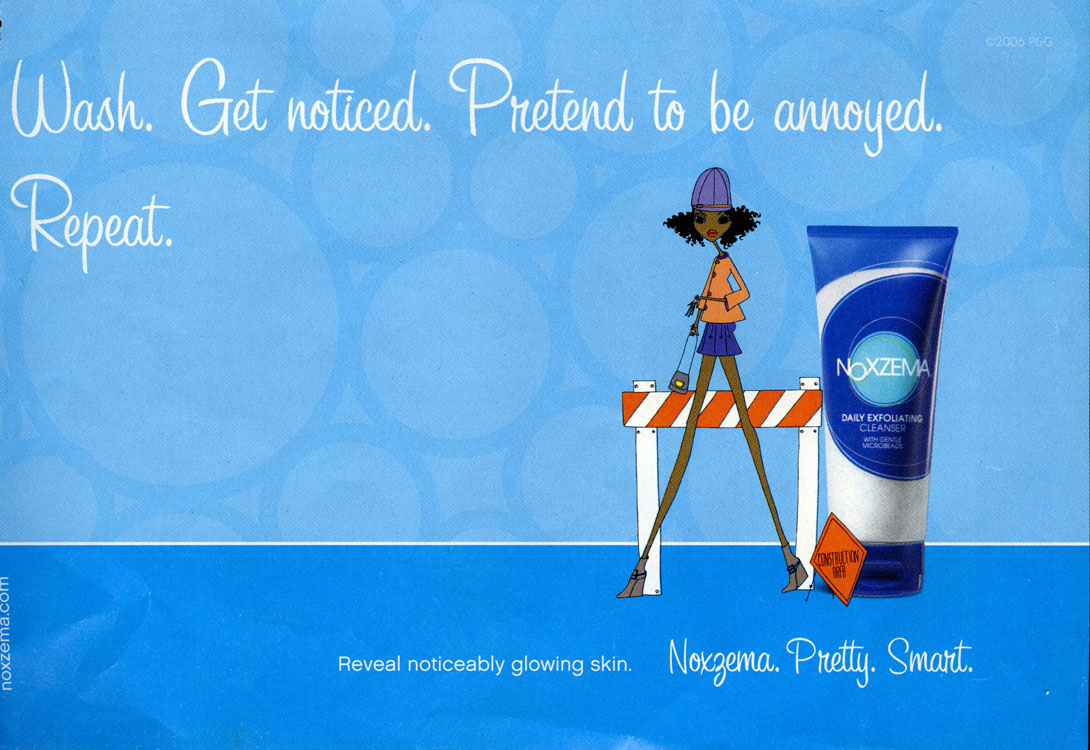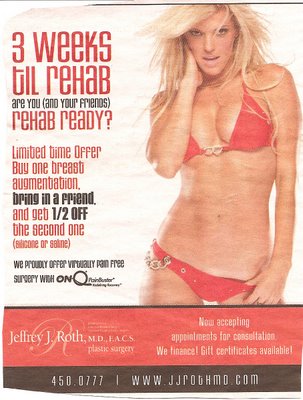I found this ad for an umbilical cord blood storage company in the April 2008 issue of Healthy Las Vegas.
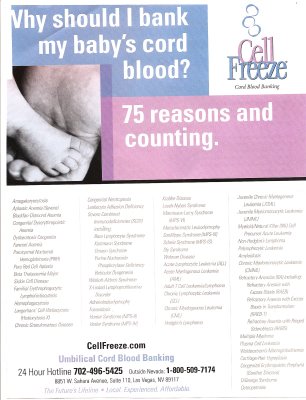
It provides a list of all kinds of very scary-sounding diseases as reasons you should pay to store your baby’s blood cord. It’s another example of scaring parents into buying expensive products to protect their kids–and, obviously, if you won’t spend the money to store your baby’s umbilical cord blood for years, you aren’t a very good parent.
I went to the company’s website. Under the heading “You Only Get One Chance to Bank Cord Blood” it says:
Banking a baby’s cord blood could prove invaluable should you ever need it. You only have one chance to collect this vital fluid and minutes after your baby is born. This sample has the potential to not only help the baby in the future, but also to blood relatives such as parents and siblings. It offers a powerful medical resource in fighting devastating chronic and acute diseases. Think of it as an investment in your family’s future.
It costs $1,850 for the kit to collect the blood from a single birth, plus $95 a year, or $1600 for 18 years, to store it.
Just for fun I looked up the prevalence of some of the diseases listed in the ad. Lesch-Nyhan Syndrome occurs in about 1 out of every 380,000 people. For amyloidosis, it’s about 1 in 100,000. Less than 1 in 200,000 people have Wolman disease (these are all NIH estimates).
To put this in perspective, according to some calculations, a male African American child has about a 1 in 20 lifetime chance of being killed by gunfire. I don’t know what it is for white kids, but I bet that, risk-wise, you’d be better off buying your kid a bullet-proof vest than banking their cord blood.
Fetish #16: Apply generously to your neck so he can smell the scent as you
shake your head ‘no.’
NEW: Here’s a Noxzema ad that plays on the same idea–that women actually like being harassed:
Sent to us by Laura L., who found it at the Sexual Assault Prevention and Awareness Center website.
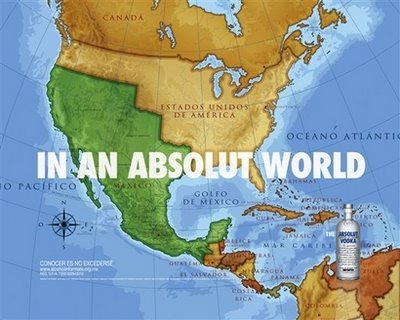 This Absolut vodka ad (found here), which ran in Mexico, has caused quite the stir here in the U.S., since it implies than in a perfect world much of the U.S. would still be part of Mexico. A number of groups in the U.S. are boycotting Absolut. This is one of those cases where an ad aimed at once audience (Mexicans) is noticed by another audience it was never meant for.
This Absolut vodka ad (found here), which ran in Mexico, has caused quite the stir here in the U.S., since it implies than in a perfect world much of the U.S. would still be part of Mexico. A number of groups in the U.S. are boycotting Absolut. This is one of those cases where an ad aimed at once audience (Mexicans) is noticed by another audience it was never meant for.
Similarly, though I could be wrong, I bet most straight male Miller Light drinkers aren’t aware of these ads and wouldn’t be thrilled with them.
One of my favorite things to do in class is to show students that advertisers target their images to the audience. Students are often resistant to the idea that advertisers consider every aspect of an image, or that gendered or racialized elements are used intentionally. Showing ads for the same product that are targeted at very different audiences can be a way to get students to think about the fact that marketing is very deliberate and nothing in a multi-million-dollar ad is left to chance.
I previously posted this Cadillac ad:
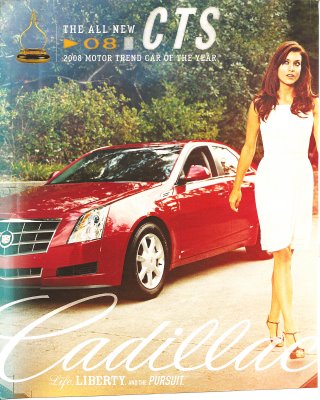
Then I found this one in QVegas, which targets the GLBT community:
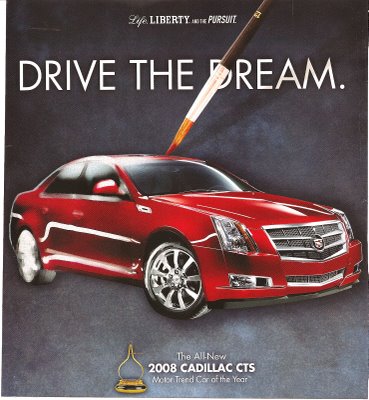
These might be useful for sparking a discussion of how advertisers alter their message based on the desired consumers, and that they know what kind of image will resonate with various demographics. And note that the second ad doesn’t have the menacing tone of the first one. Other examples: here and here.
This ad reminds women that they need to get their bodies ready before Rehab–and no, not that kind of rehab; it’s a big party being put on here in Vegas. Without new boobs, you simply won’t be “ready”–i.e., attractive enough–for this event. This could be useful as a really extreme case of ads that try to make people feel inadequate and provide a solution in the form of a product or service.
And as far as I can tell, what you’re supposed to be “ready” for is to be sexually available–she’s pulling her bikini bottom down and has a seductive look on her face.
Also, notice the doctor is having a “buy one, get the second 1/2 off” special if you bring in a friend. So women should encourage each other to feel uncomfortable about their bodies.
From Las Vegas Weekly.
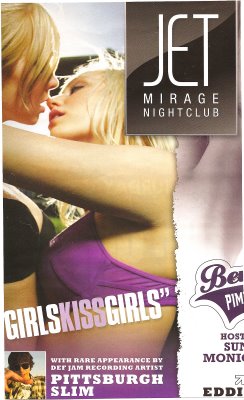
I have a feeling this ad is not meant for lesbians (the other half of the page showed a half-naked woman; both were for mainstream, non-lesbian-oriented clubs). This might be useful for discussing different attitudes toward gays and lesbians–it is difficult to imagine an ad of two men kissing aimed at straight women. In this case, women kissing is not about THEIR sexual pleasure, but about that of the audience–presumably straight men. The assumption accompanying images such as these, of course, is that the women are not actually lesbians–they’ll still be sexually available to men. This is another difference in cultural views of gays and lesbians–lesbians’ sexual orientation is often doubted (they just need to find the right man) in a way gay men’s usually isn’t.
From Las Vegas Weekly.
Here is the trailer for Resident Evil 5, which is not yet on the market:
The player is the sole white person in a dismal, threatening city, apparently in Africa. The locals engage in torture (which we see in some detail) and gleefully cheer at a hanging. At one point the hero is accosted by an angry mob, all of whom just make gutteral, animal-like sounds. In a beleagured voice he tells us he just doesn’t know “if it’s all worth fighting for. Who knows?” Oh, the white man’s burden, indeed!
Thanks once again, Patrick C.!
Jeff G. sent in links to several articles about the game, if you’re interested. Here’s one with the director, and here’s an article about a British government censorship agency officially ruling the game isn’t racist.
NEW! Ryan sent in an image of a character from the game:

Ryan points out it’s another example of non-White women being portrayed as exotic or animalistic. Thanks for the image!


